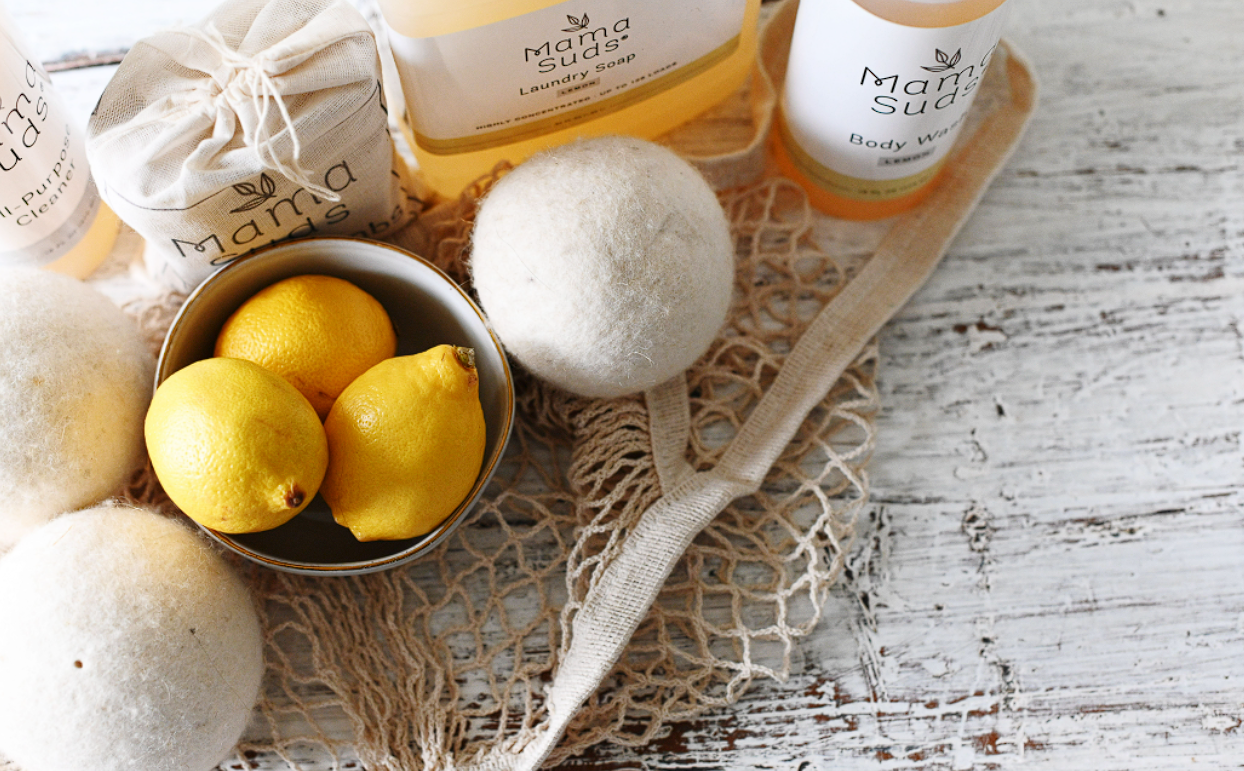
The CleanSuds Blog
Where education and truthful facts are easy to come by.
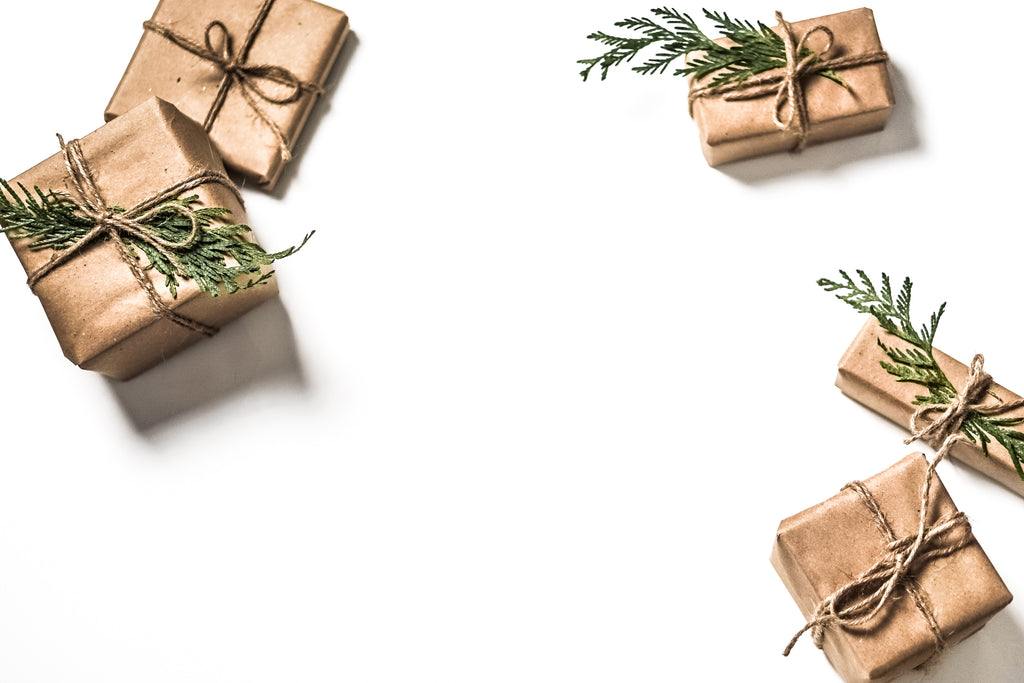
Show Mom You Care With An Eco-Friendly Gift on Mother's Day
Sixty-two percent of consumers in the U.S. and U.K. are buying eco-friendly products for a healthier life. Living an eco-friendly lifestyle is becoming increasingly popular among many cohorts, and moms are getting on board as much as anyone else. An eco-friendly gift may be just what your mom is hoping for this Mother’s Day.
A Plastic Free Kitchen
The kitchen is a great place to start going eco-friendly and plastic free for so many reasons. Plastic may seem like a convenient tool for packaging food and more, but storing food in plastic containers causes small amounts of plastic to leach into the food, a process which is increased when exposed to heat or when the foods are fatty, salty or acidic. Not to mention the environmental impacts of single use and even reusable plastics. Fortunately, many reusable and eco friendly products exist to replace disposable kitchen plastic. Curating a little gift basket of eco-friendly kitchen items could be the perfect gift for a mom who loves to cook. Include items such as cloth grocery bags, beeswax food wraps, silicone ziplocs and a reusable mug or cold cup for on the go.
Green Luxury
So many mothers love receiving soothing self care products to thank them for all the hard work they do as moms. But many of our favorite luxury products include ingredients that can have adverse health and environmental effects. Paraffin based candles, according to researchers at South Carolina State University, will pollute indoor air with several toxic chemicals that can lead to respiratory problems. Beeswax and soy candles, however, do not contain the same chemicals, and can be burned safely without risk of health problems. Make a quick and easy sugar scrub in a reusable glass jar, and combine it with a book and a safe-to-burn and eco-friendly soy candle for a mom who’d like to put her feet up and read a good book more often.
Sweet and Simple
Some of our mother’s are difficult to buy gifts for, but there’s almost nothing a mom appreciates more than a heartfelt and handwritten note from their child on Mother’s Day. Many companies now make plantable greeting cards made from recycled paper materials. Plant seeds are inserted directly into the paper so that once the note has been thoroughly appreciate, your loved one can plan it in their garden. The paper decomposes and a flower or vegetable grows in its place. Along with a sweet note, you can personalize a plantable card with a favorite fair trade chocolate bar or two, a potted plant, or maybe even an e-gift card to save paper and avoid buying something she might not use.
Mothers work hard for their families every day, whether their children are small or all grown up. Make sure to show how much you appreciate her this Mother’s Day with a beautiful gift that protects both her health, and the earth that her children and grandchildren will inherit from her.
contributed by Sally Preston
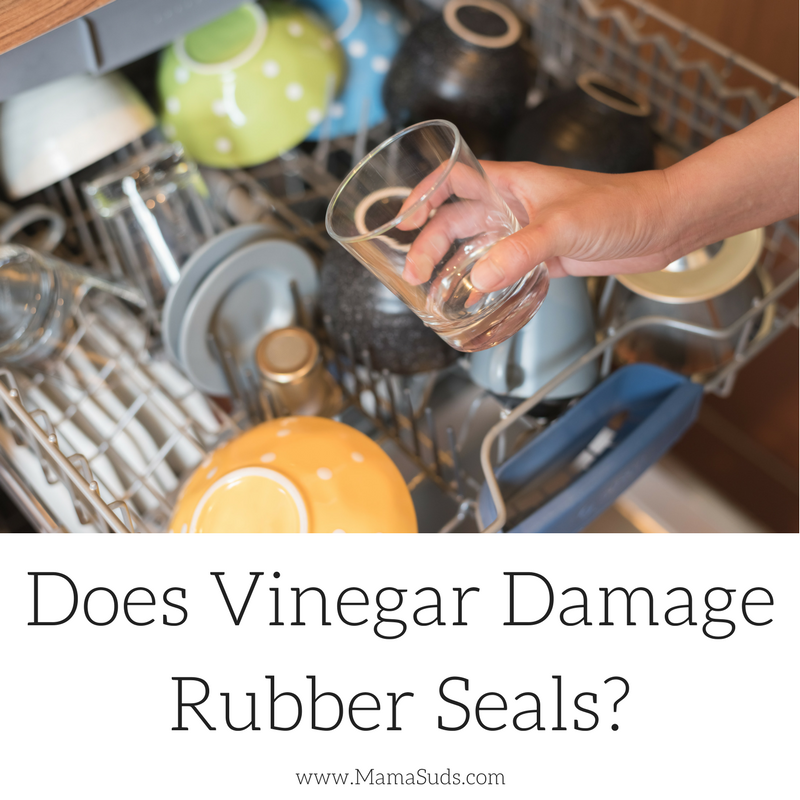
Does Vinegar Damage Rubber Seals?
• The pH of distilled white vinegar measures between 2.4-3.5 and has a lower pH than commercial rinse aids containing citric acid.
• Use a small glass filled with white vinegar on the top rack of your dishwasher to avoid contact with the rubber seals in the rinse aid dispenser when using vinegar in the machine.
• Purchase an all-natural, biodegradable dishwasher powder detergent with a sample pack option or opt for an all-natural laundry detergent soap free from synthetic ingredients, fragrance and dye.

Natural, Safe Cleaning Tips For Homes With Pets
Indoor air pollutants are up to five times higher than outdoors, and the chemicals in cleaning products are a big culprit. Removing the chemicals from your home by switching to natural cleaning products can reduce your homes air pollution, which can only be good news for both the health of you and your family, but also your pets. All pets love to lay on the floor and roll around, cats are known to walk over your kitchen countertops and dogs may even have a drink from your toilet bowl. This means that everything you use to clean your home has the potential to harm your pet, which is why it’s essential to use safe, pet-friendly cleaners.
Natural ingredients can be toxic to pets
Cleaning products that claim to be made with 100% natural ingredients are, in general, better for the health of both humans and pets, as well as the planet. But there are plenty of natural ingredients that can still be harmful to pets, so you need to make sure products are pet-friendly, as well as natural and eco-friendly. Essential oils are commonly used in homemade cleaning products for their scent and cleaning properties, but they are a highly concentrated volatile oil, which means they can cause irritation or harm to humans and pets if misused. In particular, tea tree oil should be kept away from cats.
Homemade natural and safe cleaning products
The majority of homemade cleaning products can be made using a combination of distilled white vinegar, baking soda, and water, all of which are natural and perfectly safe for your pets. Keeping floors clean is a common chore for parents as young children spend a lot of time playing on the floor and pets will walk around and then lick their paws. Baking soda alone can be sprinkled on to carpets to remove stains, odors or just for a freshen up. Leave it to sit for a few hours and then vacuum it up. For a simple all-purpose cleaner, mix together ½ cup of vinegar with one cup of filtered water, two tablespoons of lemon juice and two tablespoons of natural and pet-safe washing up liquid. Alternatively, you can buy products if you don’t have time to make them yourself. A regular supply of eco-friendly and pet-friendly cleaning products from ThriftyCrates will ensure your home is always spotless.
Using plants for air freshener
Air fresheners contain loads of chemicals and some even pollute the air more instead of doing any good, so when you’re trying to remove or cover up pet smells, it’s best to avoid these. Plants are a great way to purify your home’s air, as well as adding a decorative touch. Some plants are harmful to pets, such as lilies and aloe vera, but there are plenty to pick from that are safe for pets. For example, money trees, spider plants, Areca palms and Boston ferns are all good options for cleaning the air and removing odors while keeping pets safe. Just be sure to keep them out of reach of children who could easily knock them over.
Cleaning your home with non-toxic, natural and pet-friendly products helps to improve the air quality in your home, which not only benefits your beloved pets but also your whole family.
Contribution by freelance writer Sally Preston
5 Reasons why You Should Start Green Cleaning
The more we learn about the planet and the environment, the clearer it becomes that our actions are having a negative effect on the world’s health and the health of humanity.
It’s not just the overuse of fossil fuels and other less desirable sources of energy, there are many everyday things we do that are causing damage without us even realizing it.
One of those things happens to be the way in which we keep our homes clean. It’s unsettling to think that our efforts towards personal cleanliness could have the opposite effect, but it’s true.
We take it for granted that we should just go to the store, buy popular cleaning products and use them in our homes, but when we do that we don’t really know what toxins we’re releasing.
The practice of green cleaning, is using eco-friendly, chemical free products in the place of the normal cleaning products you would use.
It might sound like more work, but it’s not actually as big of an overhaul as you might think. Here’s 5 reasons why you should try it:
- It’s Cost Effective
If you switch to green cleaning, you will be making most of your own cleaning products and potentially even some of your own cleaning utensils.
A lot of the stuff that you will need to make these products you will have in your house anyway, so it will really be cutting down the costs
Consider some of the cleaning products that you can make and what ingredients that you are going to need for it. You may have heard of us? MamaSuds?
Take this list for example. While not everything listed here is entirely chemical free, there are a few things here that are pretty common to the various different recipes that are.
You’ve got white vinegar, baking soda, lemon juice and table salt. All things that you could probably find in your kitchen right now if you look.
Think about how much you actually spend on cleaning products, and then consider that you can almost cut all of that out of your expenses if you start making your own.
It’s a pretty worthwhile change.
- It Detoxifies Your Home
So many people are living in a toxic environment without even realizing it. They pump all of these chemicals into the air, unaware of the damage they could be doing to their health.
A lot of store-bought cleaning products, in particular antibacterial sprays and fabric softeners contain quaternary ammonium compounds.
This stuff can contribute to people getting asthma and it’s an especially dangerous environment for children.
It’s not just your lungs you need to worry about though, the spray cans that you use can often contain volatile organic compounds too, which are dangerous in many ways.
They can cause long term damage to your kidneys, your liver and even your central nervous system and leave you susceptible to a number of illnesses.
Cutting out those products and just using ones that you’ve made yourself can keep the air nice and clean.
- It Helps the Environment
This is probably the main reason why so many people want to switch to green cleaning and it’s definitely one of the biggest incentives.
All of those chemicals we discussed earlier? They’re just as bad for the planet as they are for your health, but the problems run deeper than that.
Think about the packaging of all these products. Plastic bottles and aluminium cans mainly, that stuff isn’t eco-friendly either.
Of course we are making an effort to recycle, but our oceans are full of plastic that people have thrown away and it’s a problem that’s getting bigger and bigger.
Do the recycling in your own home. When you make your own products, you can use the same bottles over and over.
You can minimize your ozone depletion and do you own part towards preventing the negative effects of climate change.
Of course, it’s not entirely up to individuals to stop global warming, but if everybody switched to green cleaning it would definitely be a step in the right direction.
- You Won’t Contaminate the Water Supply
Ammonia, phosphorous, petroleum, these are some of the chemicals that you’re using when you clean with store-bought products.
And they are also some of the worst chemicals for our water supply. That’s where some of this stuff ends up.
You use a rag or a sponge to clean and then you wring it out over the sink. Down the drain and into the water it goes.
If you use it to clean the toilet or the shower then your going to end up flushing it or washing it down the drain there too.
It will end up in the lakes and the rivers where it can hurt the wildlife and also can end up back in your drinking water.
That’s a scary thing to think about but you won’t be contributing to it if you switch to green cleaning.
Cleaning your bathroom is never going to be a fun job so the thought of having to overhaul your method is probably annoying, but it’s worth the effort.
Take a look a this guide from Complete Home Spa on how to clean your shower head, it would be a good place to start with.
- You Know Your Ingredients
It’s hard to know what exactly is in the products that you’ve been using. There could be a lot of chemicals in there that you’re unaware of.
Despite the ingredients list that you see on the back of the packaging, there’s no way of being certain what’s in there.
Sometimes there’s less than desirable chemicals hiding behind ambiguous names. You could see a word that you don’t recognize and it’s actually something you wouldn’t want in your home.
But you are entirely in control of the ingredients when you make the products yourself. You know exactly what’s in there.
And if there’s a particular ingredient that you don’t want for whatever reason, it’s as simple as picking an alternative.
You have way more control and that’s something that you should want considering it’s your home and your family.
Conclusion
And there’s many other reasons to switch too. Green cleaning is the healthier, safer option and it would benefit the planet in a big way if more people were putting it into practice.
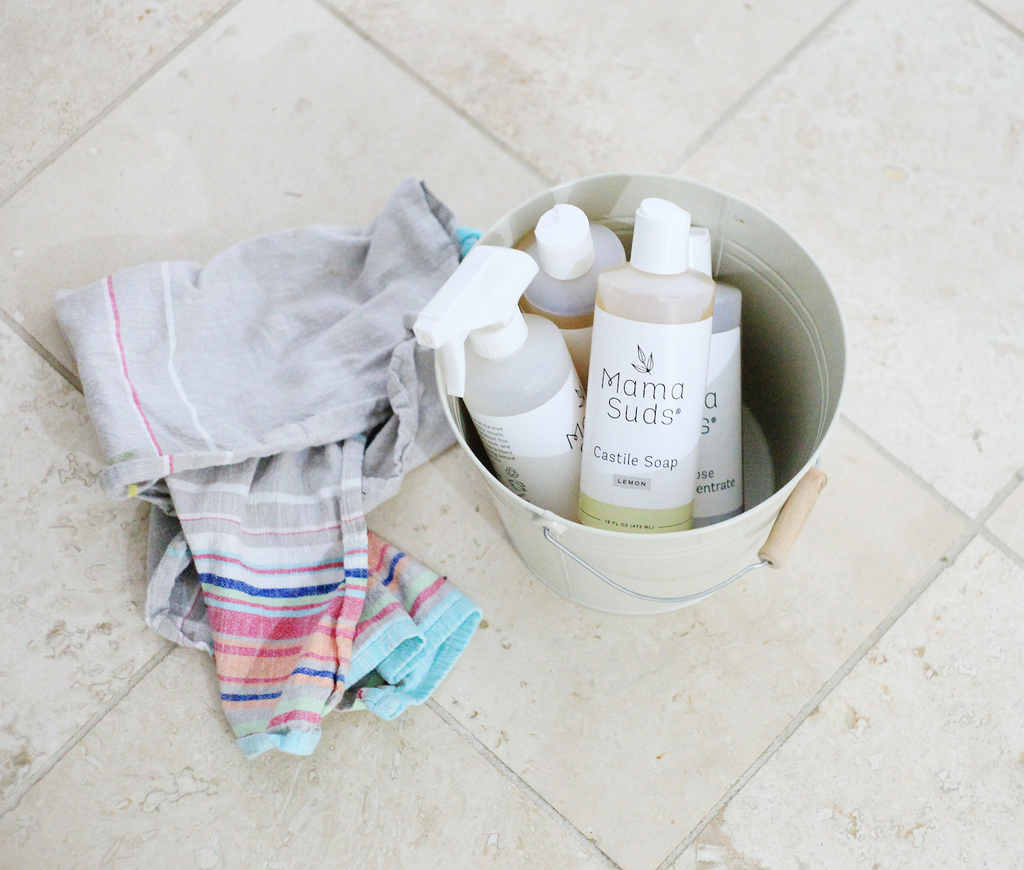
Spring Cleaning in under 10 Steps
According to the calendar, Spring is just around the corner! I don't know what the weather is like in your neighborhood, but I just watched the news and here in Michigan, we are supposed to have record breaking cold temperatures this week. Ugh. Enough all ready! Do you hear me Mother Nature???!!!??
Any day now, warming temps will be blowing threw and I will gladly open my windows for that elusive and long forgotten smell... Spring! Until then, we can still get ready for Spring by cleaning. But the good news is, if you use MamaSuds products and a few pantry staples you won't HAVE to open the windows while you clean!
Not sure where to start? Use this to-do list, which has all those places you've probably forgotten about (anyone?) and how to tackle them like a pro AND do it in JUST ONE DAY (whhaaaaat?!?).
- Clean light fixtures and fans. Put sheets down over furniture so it's quick to clean up the mess. Use a dusting tool or a rag on a broom and knock down all the lovely dust that's been building up over the last few months. Sidenote: Anyone else leave the fan on when company comes over so they don't see the dust on the fan? Anyone?
- Wipe down the walls, cupboards, appliances (in the kitchen). Using a mixture of hot water and castile soap will do the trick, and so will the ever-amazing All-Purpose Cleaner. Have the new Concentrate bottle? Fill up a bucket with hot water and pour about a tablespoon of that awesomeness and you have perfect "everything" cleaner.
- Clean the windows and mirrors with a mixture of water and Vinegar (1:1 ratio) or All-Purpose Cleaner. Don't forget the outside of the windows too! I always find cleaning the windows really helps make the room feel super clean.
- Vacuum and wipe down the furniture (a damp rag or All-Purpose Cleaner is perfect for this job). Don't forget the legs and feet of your furniture.
- Wipe down the baseboards and trim. I tend to clean the baseboards when I see they are dirty, but I tend to forget the tops of the doors during the day-to-day cleaning. Sometimes vacuuming the door trim before wiping them down helps! Don't forget all the frames and clocks on your walls as well.
- Wash any rugs or drapes that can be washed in the washing machine (read your tags!).
- Vacuum your mattress! Tear off your sheets and wash them, and before you put on fresh sheets, vacuum your mattress. Let's pretend nothing is gross about our mattresses but vacuum it anyway.
- Sweep/Vacuum the floors. This might be a great time to clean your carpets too!
- Mop the floors. Use a steam mop or just a bucket and a rag. Focus on the edges and corners.
Whew! You're done! Now start binge watching Marie Kondo on Netflix and clean out those drawers for extra credit!
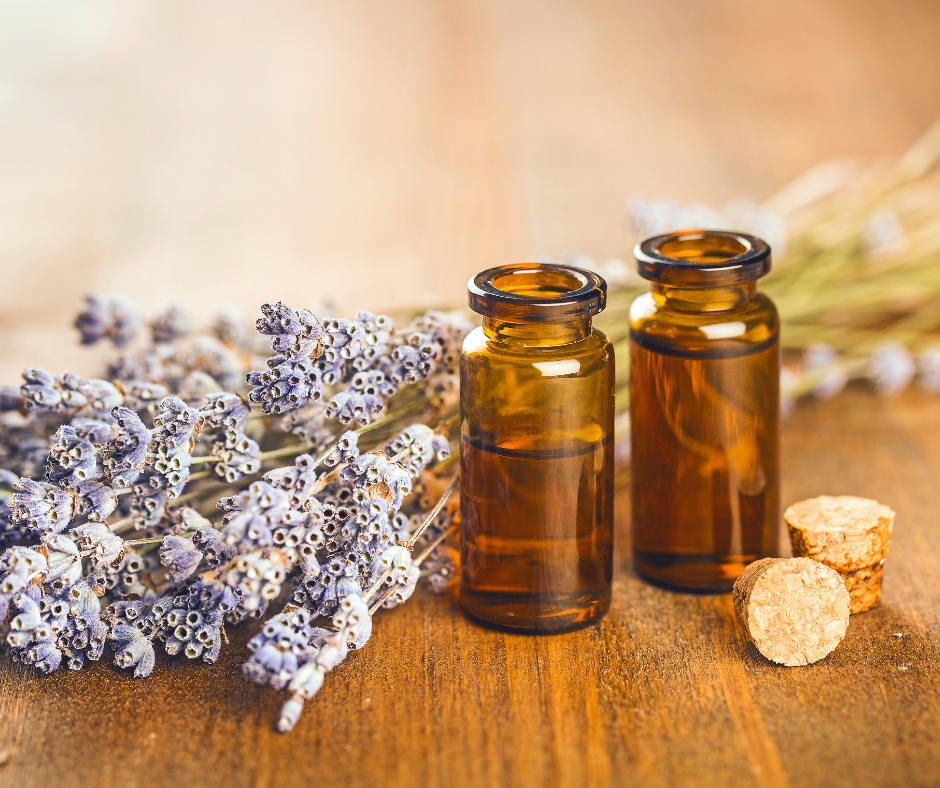
Nature vs. Manmade Oils for Health and Skin
• Essential oils, also called natural oils, are made from plant and herb extracts that have been pressed or distilled to keep their natural health benefits and scents.
• Natural oils are more expensive due to their intricate refinement process and higher purity levels. Synthetic oils are man-made scents with no health benefits and may contain compounds that can be harmful to the skin.
• Natural oils offer a range of beneficial health effects including anti-bacterial, antiviral, and antiseptic properties.
• MamaSuds carries only pure essential oils in their products, such as lavender and lemon plus a proprietary blend called Germs Away.
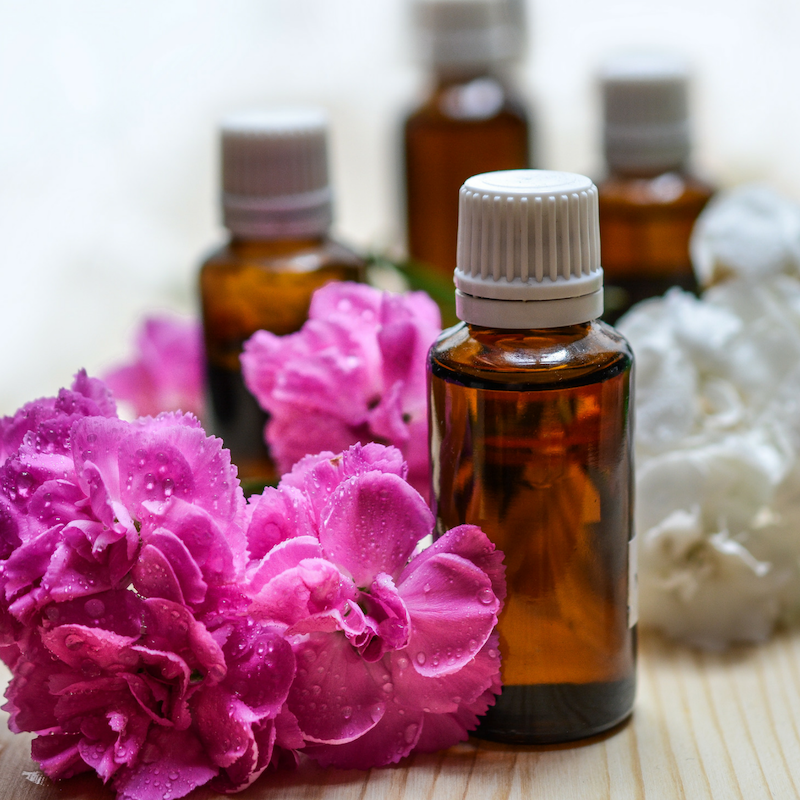
5 Essential Oils That are Great for Green Cleaning
Sometimes it can be hard to find the time that you need to give your home a good, thorough cleaning.
It can be a slow, sometimes tedious process and we often like to resort to the easiest methods possible to get it done as quickly as possible.
It’s hard to fault anyone for doing this, but the problem with the easiest route is that it does tend to be the least healthy one.
It’s a lot more convenient to tackle your house using all of the common store-bought cleaning products. And that stuff is packed with chemicals and ambiguous ingredients.
And the same applies to washing your clothes, cleaning dishes and spraying scented substances to enhance the aroma of your house.
You never know what kind of potentially harmful material you are releasing into the air when you clean like that. It’s detrimental to your health and the environment.
Green cleaning is the way to go. And with the right blends of essential oils, you can put together your own cleaning products that are way more healthy.
Here’s five essential oils that are great for green cleaning:
- Lavender
People have been using lavender for a lot of different reasons for many, many years now. It’s one of the most popular essential oils.
It’s good for your skin and hair, and it’s also good for fighting against nausea as well as things like the common cold.
It works against these because it’s antibacterial and antiviral. This makes it a great choice for cleaning your bathroom or your kitchen.
You want to use it in places where bacteria is prone to build up and also where people eat. If you mix it in a spray bottle with water and white vinegar it makes a great cleaning solution.
It’s also useful as an insect repellent as well as an air freshener that you can spray around your house.
- Peppermint
Much like lavender, peppermint is a popular way to deal with headaches and nausea, but many people don’t realize that it’s also a powerful disinfectant.
It makes for a great surface cleaner. If you mix this with some vinegar and water in a spray bottle you can use it to clean countertops.
You’ve probably noticed by this stage that vinegar, white vinegar specifically is something that you will need to have for a lot of these blends.
I know that the smell of vinegar isn’t necessarily popular but it’s useful in cleaning solutions and the oils will usually mask the smell anyway.
You can also use this particular mixture to clean the floors too. If you mix it with water in your mop bucket it should do the trick.
- Lemon
Lemon is a terrific oil for cleaning around the house because it’s got antibacterial properties but is also a low pH.
It won’t do any damage to your surfaces but is still effective in killing bacteria and disinfecting things.
Lemon is actually something that you could use to clean all of your appliances, and also ceiling fans and trash cans.
You could clean the microwave with it by just microwaving a cup filled with water and lemon oil and then wiping down the inside of the machine.
And if you want to treat the dishwasher with it, mix distilled vinegar with a few drops of lemon oil and place it in an empty dishwasher.
These are notoriously hard to clean but lemon oil gets the job done with minimal hassle.
- Eucalyptus
This is yet another oil that has antifungal, antiviral and antibacterial properties so you can use it in a lot of the ways that you can the others we discussed.
But it’s also very good at getting rid of grease and grime. Areas like the oven top, the kitchen sink and the microwave are places where this could be a problem.
Mix eucalyptus with water and, you guessed it, white vinegar in a spray bottle and then use that on these surfaces to get rid of all that grease.
It’s a good way to remove adhesive too so if there is any sticky residue stuck to countertops or windows then the eucalyptus mix will deal with that.
And on top of all that it’s good for keeping away pests and dust mites.
- Tea Tree
We can sing the praises of tea tree oil all day. It doesn’t smell particularly strong, it’s minimally invasive in terms of leaving stains or causing damage and there’s many uses.
You can use it to put together a multi-purpose, disinfectant cleaning spray which you can use on pretty much any surface.
And it makes for a very strong bathroom scrub because it’s a natural mold fighter. So it would also be great for cleaning the kitchen sink too.
Because it’s a disinfectant, you could put it to good use cleaning things like yoga mats or other pieces of exercise equipment too.
Conclusion
Put the days of letting all of those nasty fumes pollute your home and your body behind you. Give green cleaning a try, you won’t regret it.
If you want to find out more about green cleaning and how to implement it into your routine, check out this article from Groom & Style.
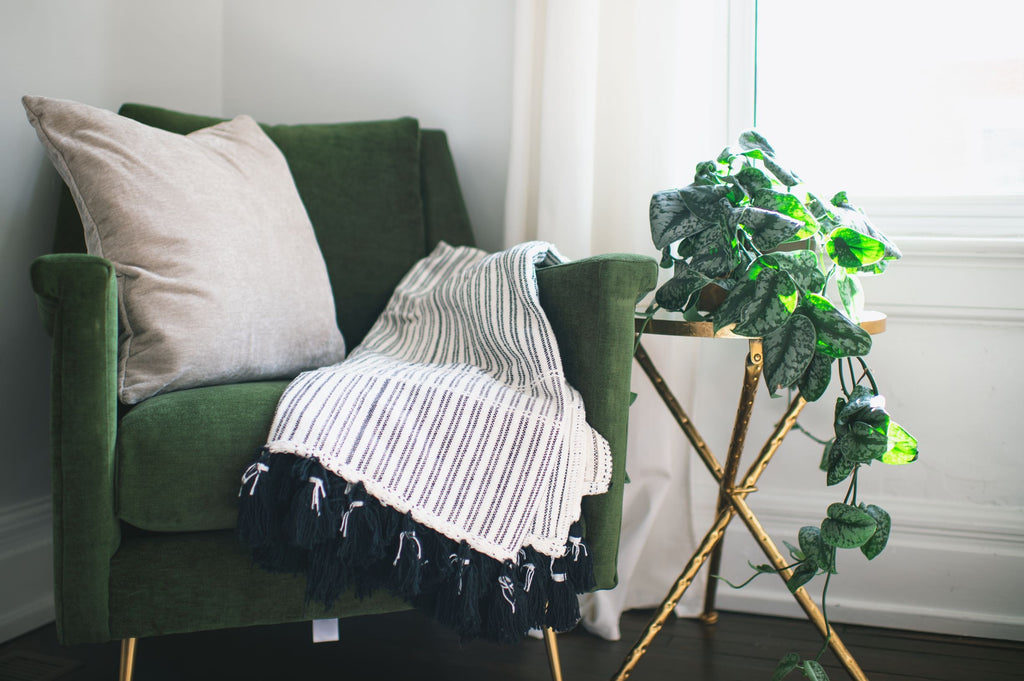
Make Your Life Green: Declutter and Free Yourself
• Clean Green: Use eco-friendly products or kitchen items for cleaning, and purchase a quality vacuum for the task.
• Recycle Large Goods: List large goods online for sale or free collection; send electronics and metal to scrap dealers; donate furniture to thrift stores and charity shops.
• Upcycle Clothes: Repurpose garments into quilts or modern clothing with tutorials found online.
• Repurpose Furniture: Refresh old items with a new coat of paint or transform them into something totally different with video guides.
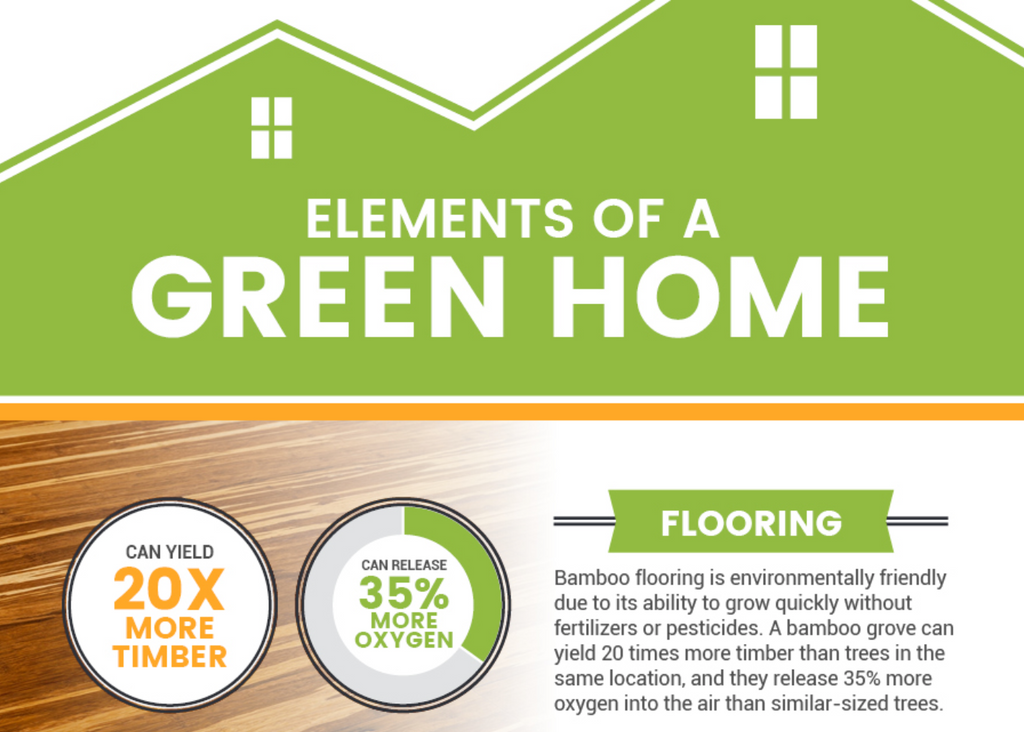
Green Living: Creating A Cozy, Eco-Friendly Home
Written by Tony M.
With sustainability being at the forefront of everyone’s minds in recent years, doing your part to contribute to a healthy environment is more important than ever. Luckily, going green has a wealth of advantages to offer every homeowner who makes the switch. From insulation to flooring (and everything in between), here are a few ways you can upgrade your living spaces to contribute to that bright, green future.
Beautiful Bamboo Flooring
One of the major problems facing our planet is deforestation; with demand so high and growth so slow, bamboo provides an excellent, sustainable alternative to traditional hardwood floors. It can grow at incredible rates without the use of fertilizers or pesticides: a bamboo grove can yield 20 times more timber than trees in the same location, and they release 35% more oxygen into the air than similar-sized trees. If you simply must have that hardwood floor look, consider ecological bamboo in place of expensive mahogany.
Wonderful Windows
A home’s windows are its first line of defense against cold and heat; they can also be its largest energy leech — if you suffer from extreme monthly energy bills, it may be due to your windows’ U-factor. Defined as the measure of how well a window insulates (and therefore how well it prevents heat from escaping), the U-factor rating system uses a scale of 0.20 to 1.20. The lower the number, the better insulated your window. Since energy leeches contribute to the size of your carbon footprint, installing well-insulated windows with low U-factors can help the environment and your wallet.
Laudable Lighting
With technology advancing every day, the emergence of light-emitting diodes (LEDs) has had a huge impact on modern society. And, best of all, they’re remarkably green! Residential LED light bulbs use at least 75% less energy and last an astounding 25 times longer than incandescent lights. Though the initial cost might be higher, they pay themselves off dozens of times over and reduce energy waste.
Impressive Insulation
After your windows, your attic is a home’s largest offender for heat and energy loss: the U.S. Department of Energy estimates that 44% of home energy use goes toward heating and cooling. Since an attic with poor insulation could be leaking air — and insulated buildings in the U.S. have been proven to reduce CO2 emissions by 780 million tons — one of the best ways to minimize your carbon footprint and save money on those energy bills is to ensure your attic is well-insulated.
Powerful Plumbing
Your toilet is the main source of water use in your home, sometimes using (and wasting) six gallons per flush. Making the switch to efficient, low-flush models can reduce your water usage by 20 to 60%. A toilet that uses less water will still provide equal or superior performance, and it goes a long way towards reducing pollution.
Best of all, you are not alone in these efforts: nearly 84% of respondents in a 2017 survey stated that living in a sustainable, eco-friendly home is important to them. If we are all able to commit to a greener future, both our personal lives and the environment will grow and blossom as a result.



